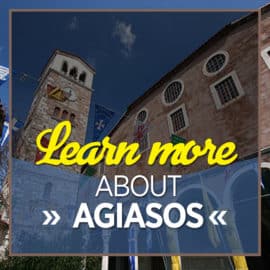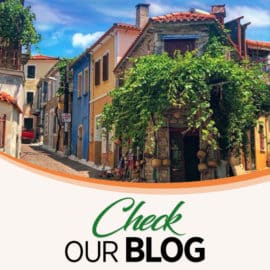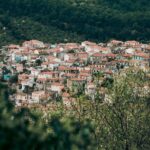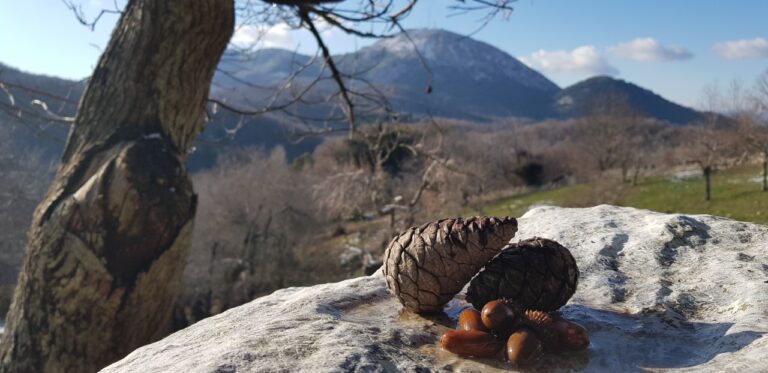
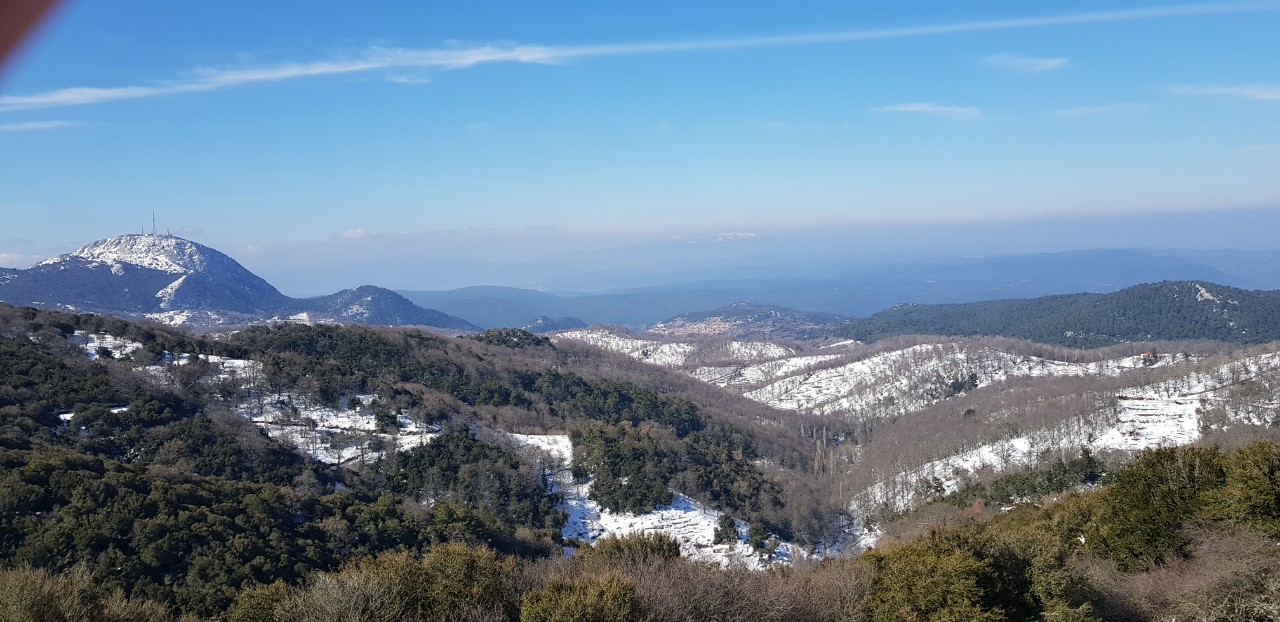
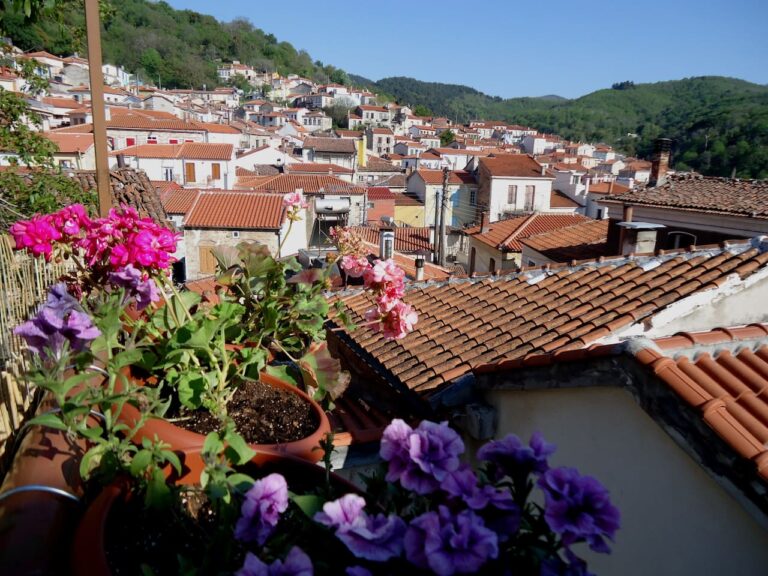
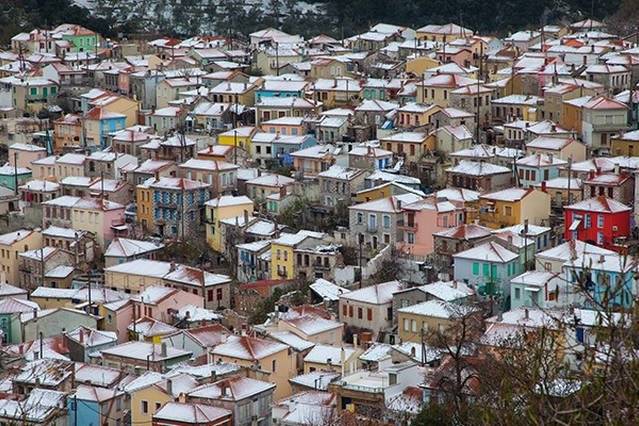

Map of Agiasos
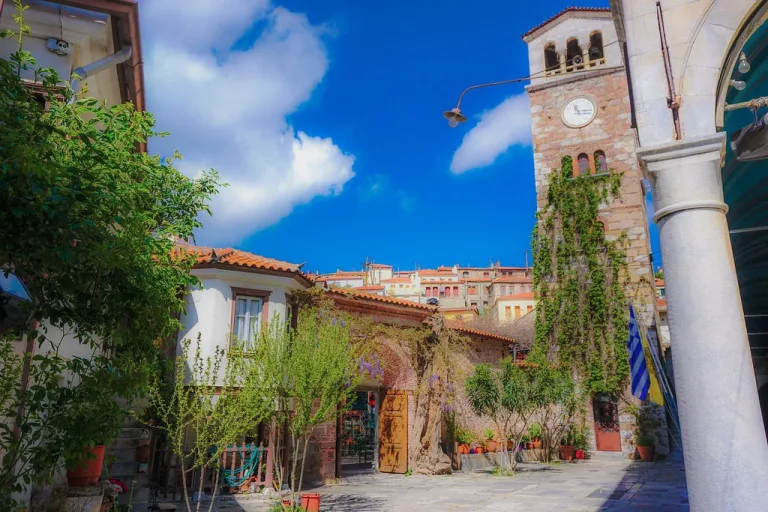
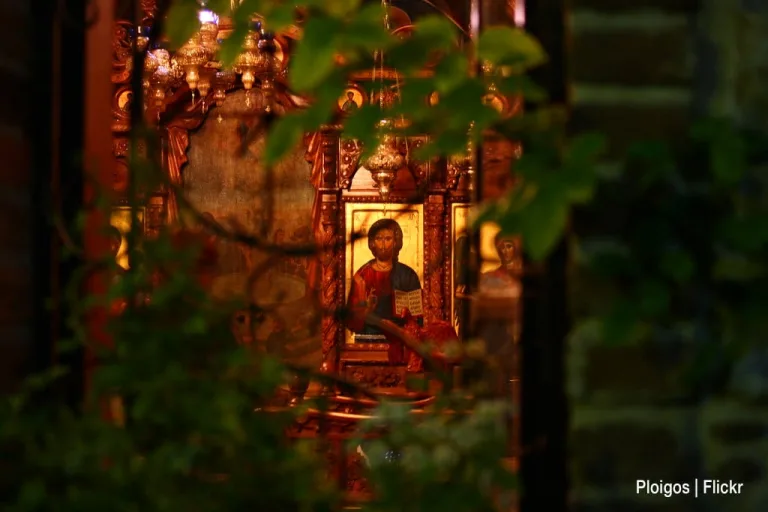
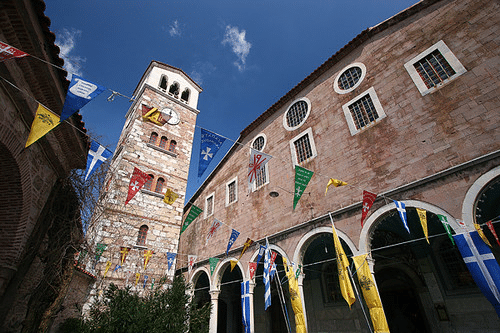
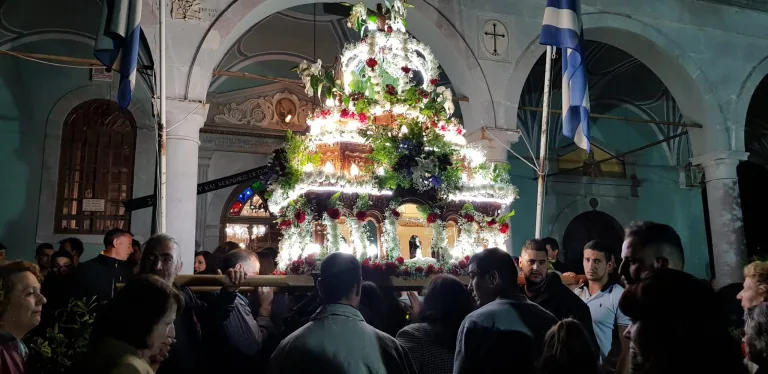
Agiasos is affectionately known as the “Jerusalem of Lesvos”, a term that accurately describes the popularity of the village with pilgrims from Greece and around the world. Known all across Greece for its magnificent church of the Agia Sion (Saint Mary of Zion), Agiasos is second only to Tinos for pilgrims who come here to kneel before the Panagia i Vrefokratousa (the Madonna and Infant Jesus), a miracle-working icon brought to Agiasos from Jerusalem by Agathon the Ephesian in the year 803.
The icon is said to have survived the Iconomachy wars of the 9th century AD together with a Silver Cross with wood from theTrue cross, a manuscript Gospel, and other relics when a monk named Agathon brought it from Jerusalem to Lesvos, an island which had abstained from the Byzantine frenzy against items of religious worship. It is believed he took refuge in a green, uninhabited area behind the current “Anagnostirio” of Agiasos named “Penthili” where the icon was found buried and now a small church stands. Join the hordes of believers who flock to the Agiasos church of the Virgin Mary at 15 of August and have an experience of the pious nature of this major event in the Orthodox Christian calendar. You can find more details here!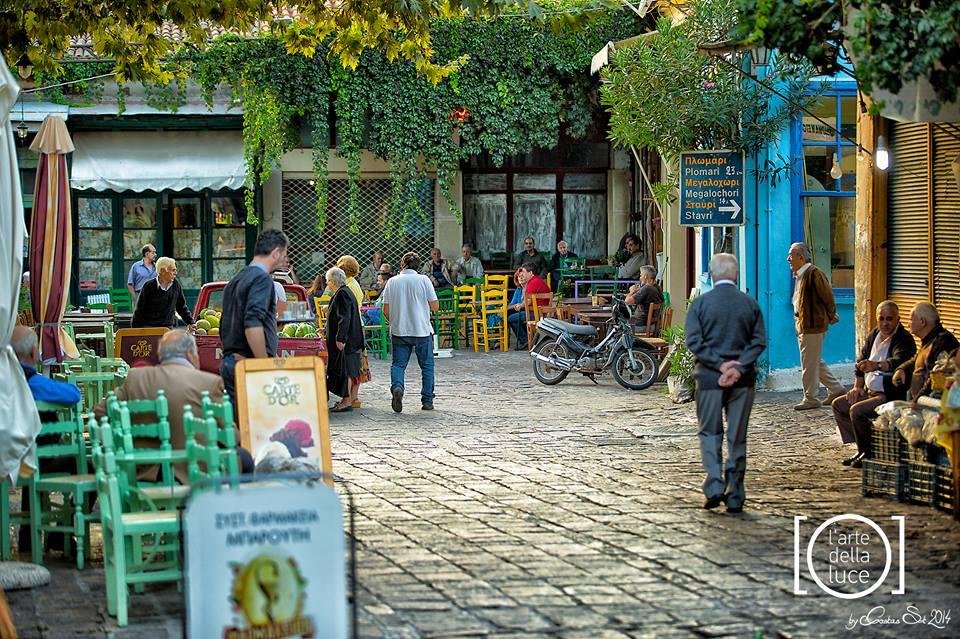
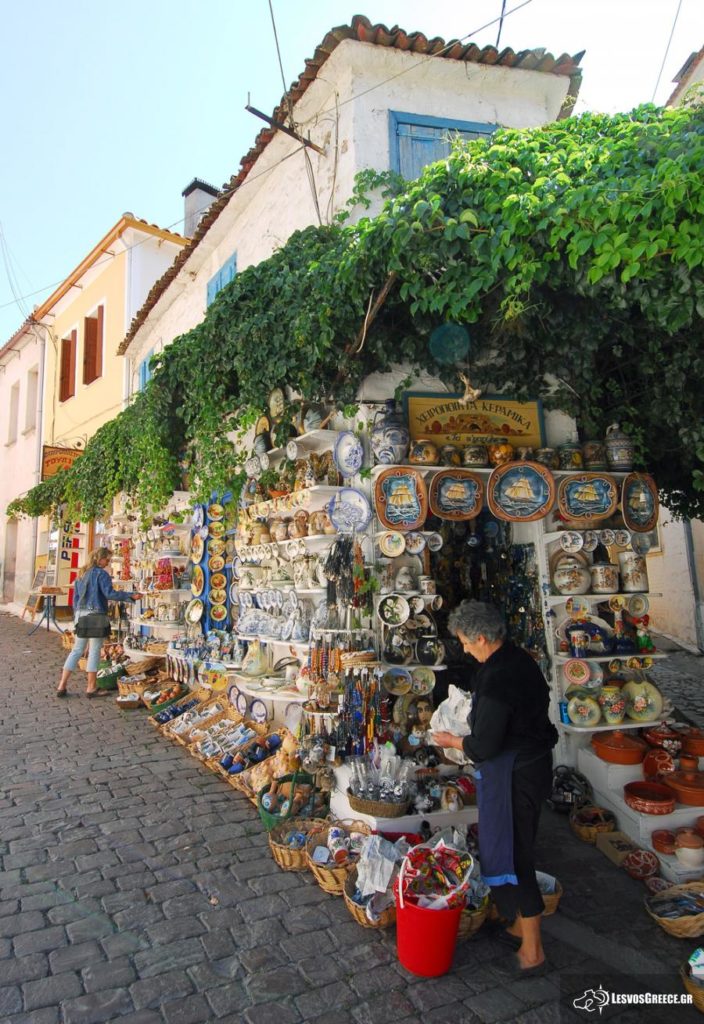
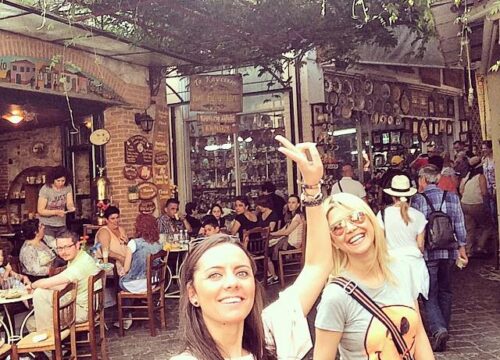
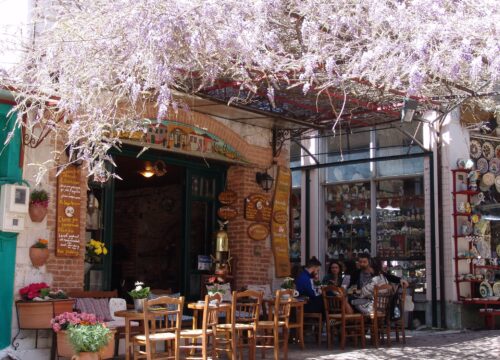
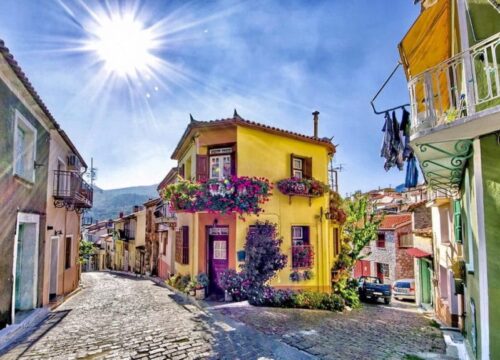
The centre of Agiasos has a lot to offer to visitors with many pottery and wood shops, traditional cafes and taverns where visitors can taste delicious dishes such as ”giapratsia” (stuffed wine leaves), “fountes” (zucchini flowers stuffed or fried), “ptaria” (meatballs), or the lovely “tigania” accompanied by a delicious “Greek salad”, full of virgin oil from Agiasos and locally produced jams.
You can find more details here!
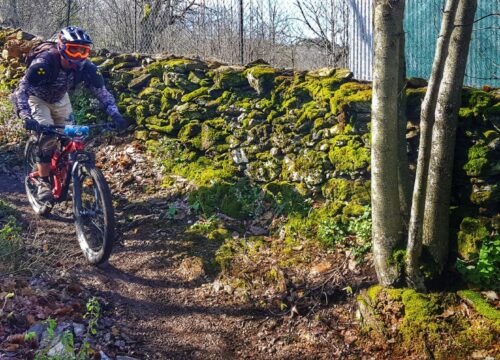
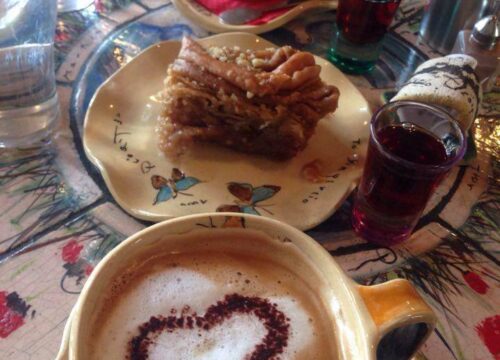
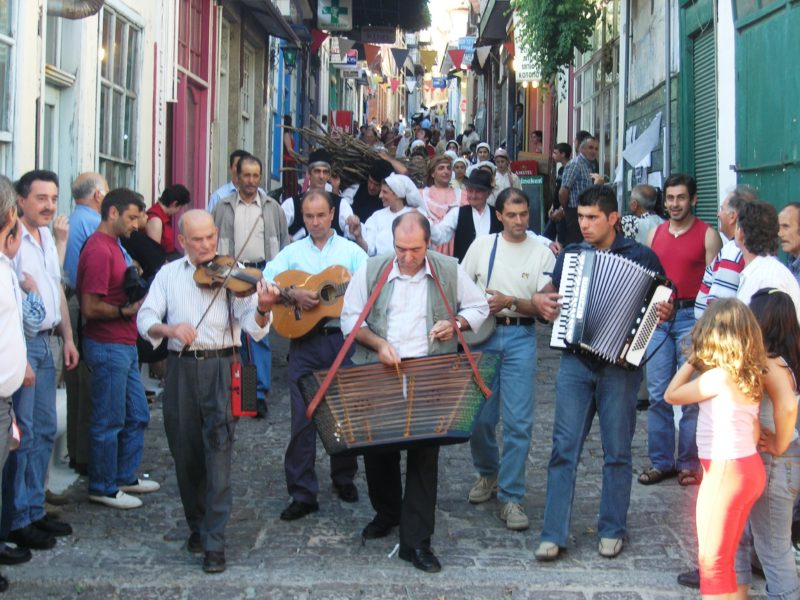
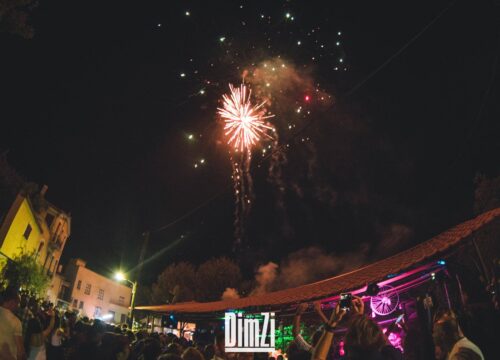

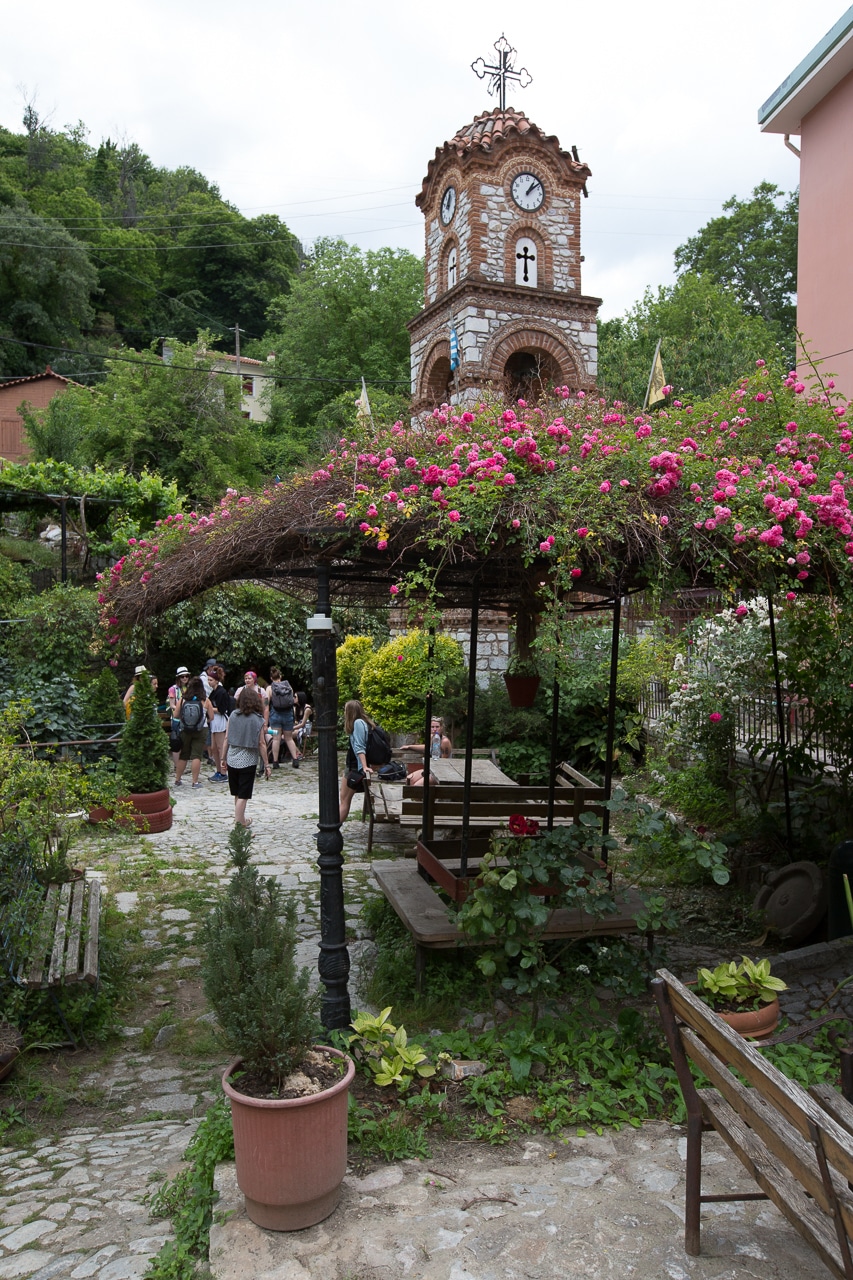

There are also many things to do in Agiasos like visiting any of the three museums, the ecclesiastical museum located in the courtyard of the Church of the Virgin Mary operating since 1972, the Byzantine Museum (the visitor can see the Cross with the Holy Wood brought by Agathon) or the Folklore Museum the premises of which exposes a rich folklore material collected from resident’s donations, like traditional costumes, textiles, embroidery, ceramics, and metal handicraft items, utensils and household items, agricultural and pastoral items, photos, etc.
Also, don’t miss the Folklore Collection of Stratis Gini at the lower entrance of the village with the private collection from Mr. Stratis Gini, where you can see exceptional handmade pottery and wood products from Agiasos.
Last but not least, the reading society of Anaptixi, a famous cultural institution, was established in 1894 when the village was still under Turkish rule and today it’s an organization which tries to continue the traditions that were passed by the old inhabitants by hosts many events at its theater hall, library or it’s folklore museum.
For a more detailed list check our guide here!

